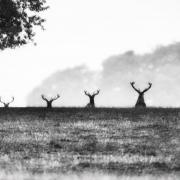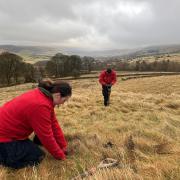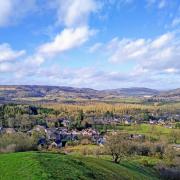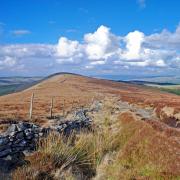The acclaimed annual international photography festival returns to Derby from 4th March to 3rd April. Ashley Franklin reports
If asked what distinguishes Derby, we might point to the four Rs – Rolls-Royce, Railways, Royal Crown Derby and Rams – before moving on to Joseph Wright and, if young, Egg and Lara Croft. We can now add photo festival or simply FORMAT to our list.
Some people will nod in appreciation, aware that FORMAT is confidently billed as the UK’s leading international festival of contemporary photography. Eighty thousand visitors attended the last biennial festival in 2009 and this year the figure could well top 100,000.
Under the title ‘Right Here Right Now: exposures from the public realm’, the festival is showcasing over 3,000 images by 300 photographers from around the world, celebrating the diversity of our lives in the spaces where we move, live and work. For four intensive weeks it’ll be possible to eat, drink, live and breathe photography.
The showpiece exhibition at Derby Museum & Art Gallery is by iconic American street photographer Bruce Gilden, focusing on his stark observations of Derby. Derby Market Place has a display of 140 large-scale photographs by renowned street shooters from the world famous photographic agency Magnum, such as Trent Park and Chris Steele Perkins. At QUAD there’ll be the works of prominent names such as Brian Griffin, one of Britain’s foremost portrait photographers, and Joel Meyerowitz, one of the world’s most lionised street photographers. Griffin and Meyerowitz are both patrons of FORMAT: Griffin declaring it ‘The photo festival in the UK.’ There is also an opportunity to view a lot of new, emerging work and attend talks, workshops, family activities and film screenings. There’s even a chance to submit your own photographs for screen displays around the city.
Two acclaimed figures to point to Derby’s emergence as a city of photography are John Blakemore and Paul Hill. They spearheaded Derby College’s Photo Studies degree course in the early 1970s, which was the first course to treat photography as an art form and is regarded as the forerunner of every art photography degree now available.
It was recognition of Derby as a vibrant photographic community that led to its first Photography Festival in 1991. Mike Brown, a Derby graduate of the 1990s, was involved in the last of these festivals in 1997 and when he returned to work at Derby City Council in 2003 the seeds of a new festival were sown. ‘I could see that the history and legacy of photography in Derby was still there in people’s minds, so reviving the festival played to one of the city’s artistic strengths. I also met Louise Clements, now QUAD’s artistic director and FORMAT curator, who came to Derby to work with Q Arts in 2002. She was as passionate about photography in Derby as I was and we were able to turn the potential into the possible.’
Louise recalls that the first FORMAT in 2005 was staged on a shoestring – ‘a �5,000 Arts Council grant and a lot of goodwill.’ However, Q Arts also received research funding which allowed Louise and Mike to hook up with the major photo festivals in Europe. ‘This enabled us to see how other festivals operated and learn from their success and, importantly, their failure,’ Mike told me. ‘We were able to develop a robust festival model that would appeal to local audiences yet be relevant to international curators, writers and publishers in photography. Credit, though, must really go to Louise: her curatorial vision has been pivotal in getting us where we are.’
Although the 2009 festival theme – an exploration of the relationship between photography and cinema – was of arguably limited appeal, this year’s focus is a subject everyone can relate to. ‘Street photography is about the everyday, the here and now,’ notes Mike.
It’s the right time to celebrate street photography,’ Louise affirms. ‘There’s a huge amount of lively, exciting street photography that has been bubbling under the surface for around 20 years which hasn’t been extolled enough.’
So what is exciting about street photography? ‘I love the immediacy and intuition behind it and the fact that something ordinary you see every day can be transformed into something extraordinary,’ states Louise.
‘To me, it’s the purest form of photography,’ adds Mike, himself a street photographer. ‘It is made of the unique and inherent qualities of the medium: with the click of a shutter it can freeze a moment in time and show us something of the world.’
Amongst the images on display this year are the curious and clever ‘grab shot’ by Ed Swinden of a walking man and a puddle reflection; the ingenuity and invention in Nick Turpin’s image of the shadow of an airliner beside an airport desk – both exhibiting the power of the ‘decisive moment’. Raghu Rai’s gritty black and white shot of a Delhi woman pushing a cart brings an element of social documentary; while Stephen McLaren’s ‘Traffic Light’ image intrigues. It appears staged yet McLaren insists on never using props, models or setting up his shots. For McLaren, co-author of Street Photography Now, such images satisfy one of photography’s core purposes: ‘To discover poetic moments in everyday life... and show us this world is intrinsically fascinating to live in.’
‘England Uncensored’ features the bold, quirky street photos of Peter Dench, a Derby University Photo Studies graduate in the 1990s (and, incidentally, a contributor to Derbyshire Life when a student), who is now an award-winning advertising and editorial photographer. Peter’s approach is to photograph ‘real people doing real things’, though as can be seen in his bright portraits, he also likes to ‘shoot and chase primary colours’ with the intent to ‘make people laugh and make people think.’
Not only has this event grown in size, scale and excellence over the last 20 years, it’s also become truly international. Brian Griffin believes FORMAT could achieve the revered status of the festival held annually in Arles – Europe’s most feted photography event – which Louise Clements sees as ‘the benchmark for all photo festivals’. Louise believes that Derby’s festival has made its own mark. ‘Although there are big photo festivals in Madrid and New York, you can’t really achieve a festival feeling in a big city,’ she points out. ‘Derby is a compact city where everything is within walking distance. Also a lot of festivals show work you’ve seen before. That’s lazy curating. Although we do look back and create a mix of photography generations, people tell me FORMAT is the place to see new up-and-coming talent.
‘Even when it comes to known talent, look at what we’ve done with Bruce Gilden. We could have put on an exhibition of his existing work, which is great, but we went that step further. We got him to walk the streets of Derby for seven days. As it’s turned out, Bruce told me that he has taken only 15 great shots in his 40 years of photography and some have been taken here. He has come to Derby and captured all the grittiness that so distinguishes his work.
‘People are coming from all over the world. Not only will this festival have a big impact, we will also be boosting the local economy. We like to think FORMAT will become an essential part of the life of the city.’
I remind Louise of Bruce Gilden’s famous quote: ‘If you can smell the street by looking at a photograph, it’s a street photograph.’ Are we going to be overwhelmed by street smells? ‘Yes, there will be lots of smells from all around the world,’ says Louise, ‘but more than smells, I can promise a veritable feast.’
Brochures are widely available or visit www.formatfestival.com
MEHRANEH ATASHIMehraneh Atashi is an Iranian artist who won the FORMAT Paul Hill Exposure Award for her photographic exploration of Tehran. The effect of shooting with a Holga, a cheap, plastic toy camera, has resulted in some curiously artistic images. Paul Hill commented: ‘Mehraneh’s work opens our eyes to a different culture. Her images are fascinatingly strange, fuzzy and distorted with her face appearing like a ghostly presence, reflecting her alienation and displacement. It’s innovative work which imaginatively and tellingly makes the personal political. It typifies FORMAT’s ambition to bring new work to a wider audience.’
BRUCE GILDENNew Yorker Bruce Gilden is a street photographer of immense renown and controversial reputation, not least for the way he achieves his raw close-up portraits. If you were in a Derby street last November and a bearded man with a woollen hat leapt out at you with a camera, you may well be in his Derby Museum & Art Gallery exhibition. ‘I visualise the anxiety, the stress and the energy of the streets,’ says Gilden. ‘I want to get as much as I can of the person - I want to get their souls.’
A FEW FESTIVAL HIGHLIGHTS - The mid-20th century street photos of Vivian Maier, a French Chicago-based nanny whose collection of 100,000 negatives was abandoned in a storeroom and discovered by photographer John Maloof only two years ago.
- An exhibition by young Derby people who have been working collaboratively with youngsters from the Seagull Foundation for the Arts in Kolkata, India. Louise Clements remarks: ‘These exciting works are the “kneejerk” responses to seeing each others’ cities through the camera.’
- FORMAT patrons Joel Meyerowitz and Brian Griffin. Some of Meyerowitz’s work will be on show and he will give a talk on his 50-year career as a street photographer. Brian Griffin has an exhibition of his 1970s street photos and will conduct a masterclass in street photo lighting. ‘I will be showing you how to balance daylight with flash to make your images more powerful and dramatic,’ says Griffin.
- A day-long conference and various talks – one by a Guardian photographer with investigative reporter Paul Lewis – will address the anxieties about privacy, terrorism and paedophilia which have made street photography a contentious issue. There is also a talk on the subject of street photo rights by Grant Smith of the British Journal of Photography.
- You can be an exhibitor, too, through Mob FORMAT. Submit your new or existing street photos and they could be shown on the BBC Big Screen in Derby Market Place and on mobile screens around Derby, while a centrally located ‘pop-up gallery’ will print and display the best submissions in a constantly evolving exhibition.


























